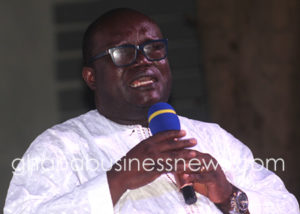Over 10,000 fibre optic cable cuts reported across Ghana

The Ghana Chamber of Telecommunications (GCT) and the Electronic Money Issuers (EMIs) Chamber of Ghana have disclosed that between January and November, there were a total of 10,233 fibre optic cable cuts across the country.
These incidents have cost the telecommunications industry a staggering $17,415,886.87 to repair, with each repair averaging $1,639.61.
Dr. Kenneth Ashigbey, Chief Executive Officer of the GCT, expressed concern over the increasing frequency of fibre optic cable cuts, warning that they posed a significant threat to the stability of the national fibre network.
He made these remarks during the maiden edition of the Technology Industry Media Excellence Awards (TIMEA) and a media dialogue in Accra.
Dr. Ashigbey explained that the funds, which could have been used to expand and improve existing services, had to be redirected towards repairing the damaged fibre optic networks.
“We will continue to work tirelessly with all stakeholders to protect our nation’s telecom infrastructure and to hold accountable those who undermine it,” he added.
Dr. Ashigbey reported that in 2024, road construction accounted for 20.68 per cent of the cause of fibre optic cable cuts.
Theft and vandalism accounted for 13.98 per cent, private developer activity 13.40 per cent, broken core 11.81 per cent, damage to poles and aerial networks 11.61 per cent, and drain construction 9.51 per cent.
Other causes included fire, farming, and floods (7.85 per cent), mining activities (5.93 per cent), Ghana Water Company Limited (1.91 per cent), railway construction (1.21 per cent), Electricity Company of Ghana activities (1.08 per cent), and bridges (1.02 per cent).
He emphasized the need for collaboration to address the risks posed by these fibre cuts, which jeopardize the national fibre backbone.
Dr. Ashigbey explained that fibre optic cable was a vital resource that connected network operating systems, enabling faster data transfers, and supporting high-bandwidth applications and services.
He also revealed that the Chamber was advocating for a policy to prevent repeated digging in areas where roads have already been excavated.
This would allow other parties to lay cables without the need for further digging.
The Chamber, in collaboration with stakeholders, has engaged contractors through the Association of Contractors at their Annual General Meeting to address these issues.
Dr. Ashigbey stated that the Chamber was pushing for the establishment of a specialized court to prosecute those responsible for fibre optic cable cuts and other related crimes that disrupt networks.
In recognition of excellence in journalism, the two chambers awarded Suleiman Mustapha of the Graphic Communications Group Limited as the best reporter in the Mobile Network Operators (MNOs) and Original Equipment Manufacturers (OEMs) (Print and Online) category.
Ms. Rosemond Akuorkor Adjetey of EIB Network was named the best reporter in the EMIs Broadcast (TV and Radio) category, while Ivan Heathcote-Fumador, also from EIB Network, was awarded in the Broadcast sub-category under the EMIs category.
The awardees were each presented with a brand-new laptop along with a citation certificate.
The awards aim to promote excellence in telecommunications and technology journalism, as well as to recognize and reward outstanding reporting that enhances awareness and understanding of the telecommunications and technology industry in Ghana.
The TIMEA is open to Ghanaian journalists from accredited media houses, independent journalists covering the telecommunications and technology sectors, and online platforms/bloggers.
The awards feature multiple categories, covering various facets of the telecommunications and digital finance ecosystems, including MNOs and OEMs, infrastructure companies (such as TowerCos and Fibrecos, and EMIs.
Source: GNA
